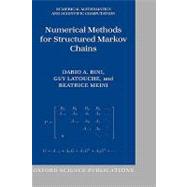- ISBN: 9780198527688 | 0198527683
- Cover: Hardcover
- Copyright: 4/14/2005
Intersecting two large research areas - numerical analysis and applied probability/queuing theory - this book is a self-contained introduction to the numerical solution of structured Markov chains, which have a wide applicability in queuing theory and stochastic modeling and include M/G/1 andGI/M/1-type Markov chain, quasi-birth-death processes, non-skip free queues and tree-like stochastic processes. Written for applied probabilists and numerical analysts, but accessible to engineers and scientists working on telecommunications and evaluation of computer systems performances, itprovides a systematic treatment of the theory and algorithms for important families of structured Markov chains and a thorough overview of the current literature. The book, consisting of nine Chapters, is presented in three parts. Part 1 covers a basic description of the fundamental concepts related to Markov chains, a systematic treatment of the structure matrix tools, including finite Toeplitz matrices, displacement operators, FFT, and the infinite blockToeplitz matrices, their relationship with matrix power series and the fundamental problems of solving matrix equations and computing canonical factorizations. Part 2 deals with the description and analysis of structure Markov chains and includes M/G/1, quasi-birth-death processes, non-skip-freequeues and tree-like processes. Part 3 covers solution algorithms where new convergence and applicability results are proved. Each chapter ends with bibliographic notes for further reading, and the book ends with an appendix collecting the main general concepts and results used in the book, a listof the main annotations and algorithms used in the book, and an extensive index.







